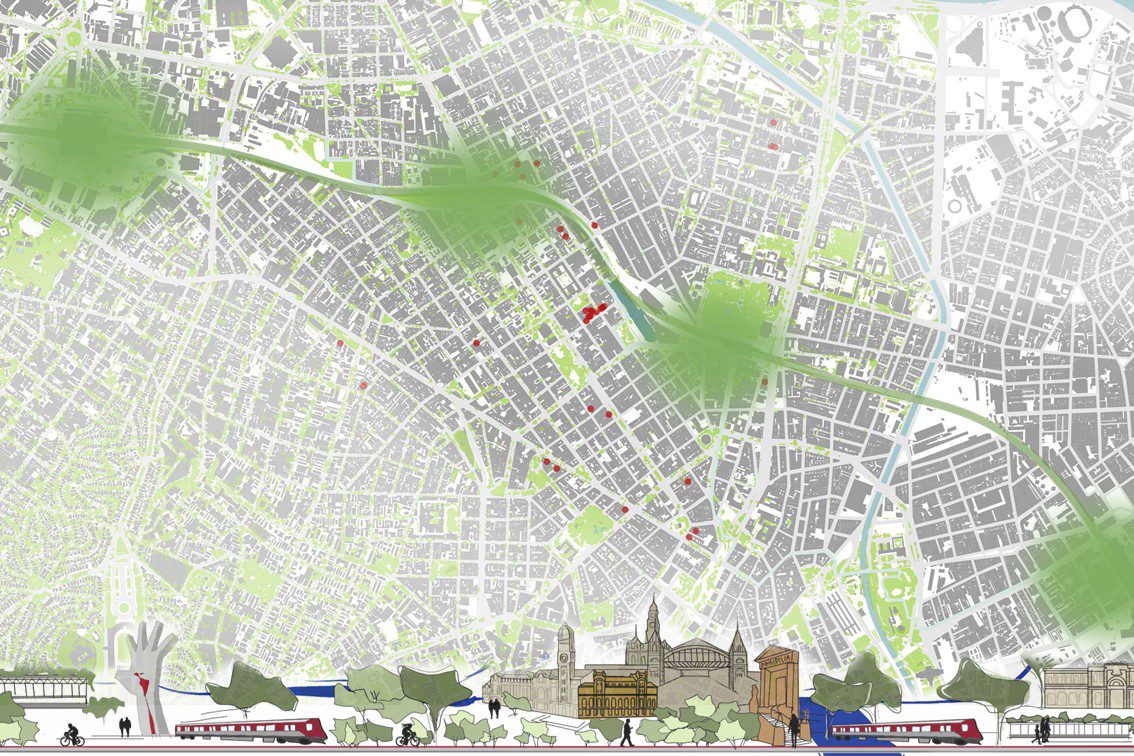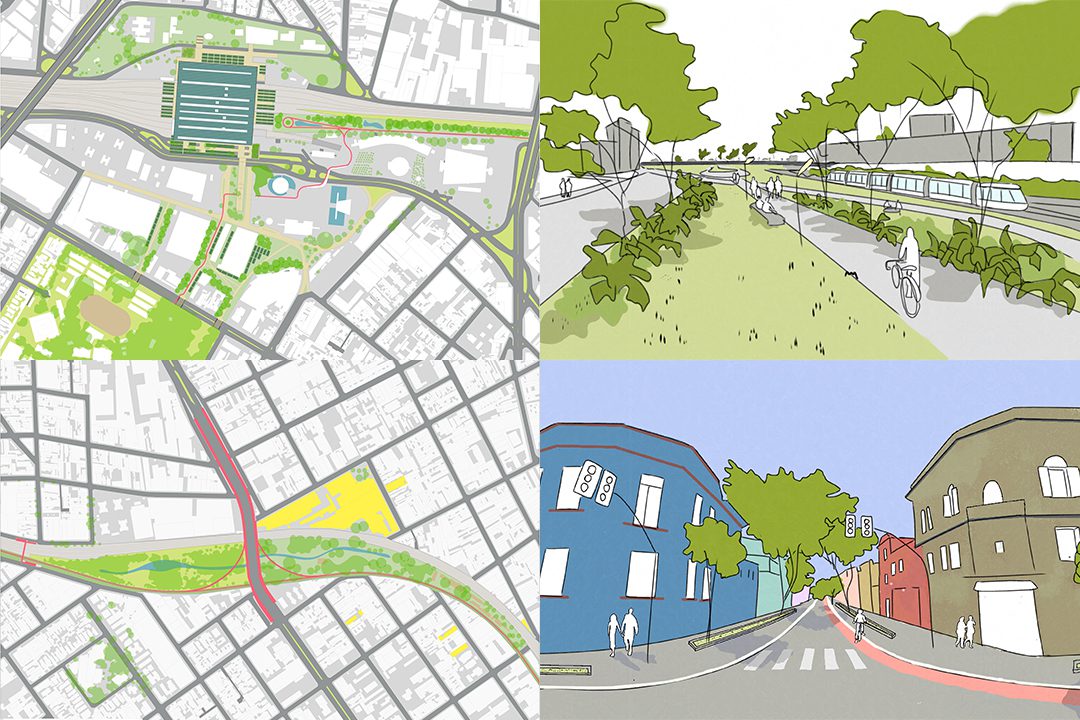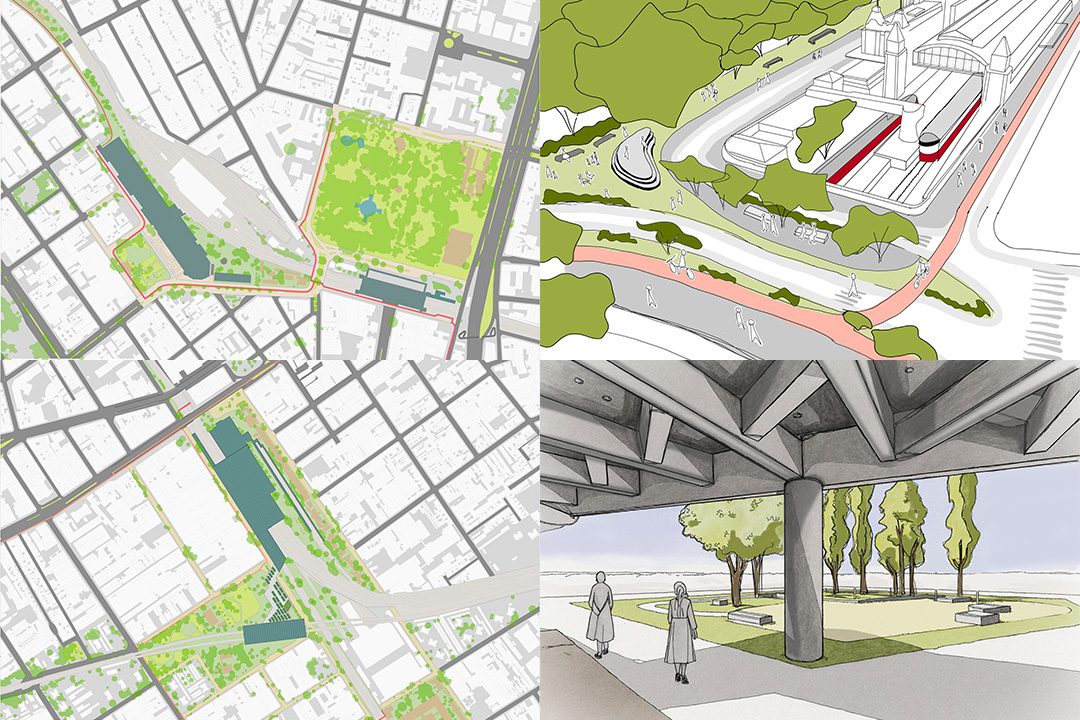Project development: Brazil
How can we transform the existing city? How can we design urgent transformations based on existing urban structures?
Metropolitan transport terminals are essential infrastructures for receiving and redistributing population flows, ensuring the daily movement of millions of people between central and more peripheral areas on the edges of the metropolis. These structures represent places where people spend a significant portion of their journey, living in inhospitable, arid spaces where everything is merchandise.
Although essential for population mobility, terminals are concrete and metal mesh constructions on impermeable ground, leaving significant scars in the urban fabric. Often isolated and unconnected to existing urban elements, they receive users without actually serving a purpose. On the contrary, this network, under extreme weather conditions, increases risk and flooding, isolating itself from the rest of the city.
In this context, the “Green Matrices” proposal reveals a design essay based on the urban (re)signification of transport terminals and their potential: previously transit points, and now, in addition to their modal function, they operate as spaces of permanence, ecological transformation, and survival.
The matrices use nature as a seeding agent and source of environmental restoration, enhancing the potential of transportation terminals and their surroundings. Degraded and underutilized urban spaces in the surrounding areas are included in the matrix system and transformed into permeable areas for rainwater capture, retention, and reuse; reforestation with native vegetation; and reduction of high temperatures. This results in environments for cultural production, free healthy food, and shelter for socially vulnerable individuals, both inside and outside the matrices.
The Barra Funda Matrix was designated for its capacity to provide food, producing urban gardens next to Água Branca Park. The Luz Matrix, due to its historical value and connection to cultural facilities, was designated for its potential for cultural production. Finally, the Brás Matrix, in respect of the ever-growing presence of immigrants in the city, was given the meaning of welcoming, in connection with the immigrant museum. This provides shelter and services for those arriving and departing, or for anyone in a vulnerable situation, far from their country.
In this urban area, the redefinition of terminals in green spaces promotes the expansion of public functions such as cultural practices, social areas, healthy food and care, provision of basic services (drinking water and public restrooms) for collective well-being and the construction of more just and inclusive cities.




